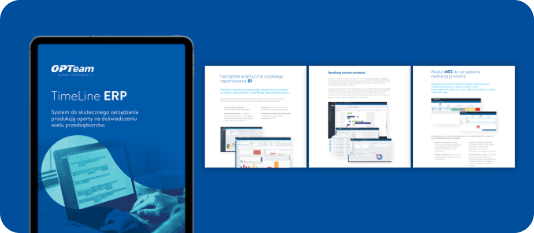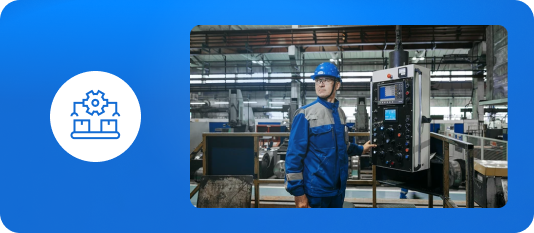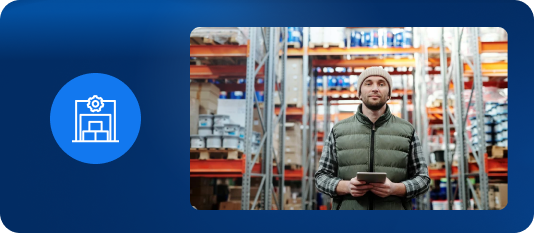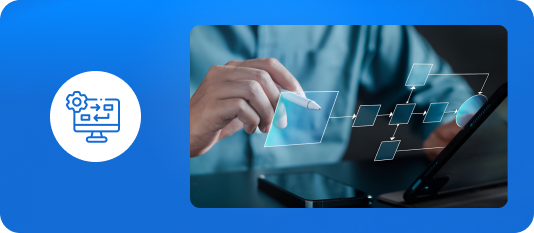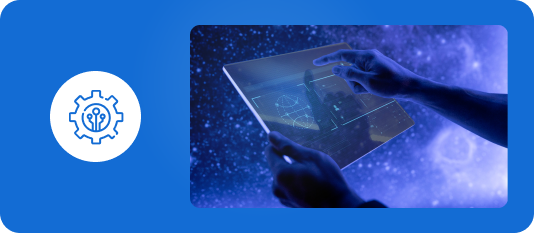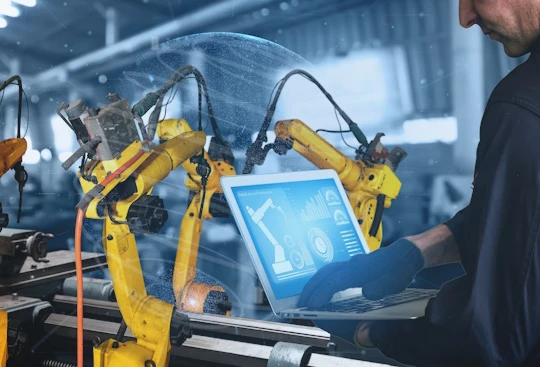IT systems for company and production management in the era of Industry 4.0 and the Internet of Things
Technological advancements are significantly impacting the way modern businesses operate. Many currently utilize multiple IT systems, particularly in the manufacturing sector. However, in the era of the Internet of Things and Industry 4.0, this isn't always sufficient for effective business operation. So, where is the digitalization of businesses heading?
Digitalization has led to an increase in the number of IT systems in use, resulting in the automation of many processes and the acquisition of large amounts of data (Big Data) from various areas of the enterprise. In practice, this leads to improved company efficiency and productivity, but it also creates new needs, reflected in new concepts – the Internet of Things (IoT) and Industry 4.0. The fundamental premise of Industry 4.0 is the integration of all IT systems into a single, coherent environment, allowing for the consolidation of acquired data. The Internet of Things concept, in turn, assumes the use of information technology and intelligent tools to transmit, collect, and analyze large amounts of data. Therefore, it is not just about system integration, but also about integrating data into areas coordinated via the network.
Integration of IT solutions
With the computerization of enterprise management and the production process (implementing modern technologies in production lines and manufacturing automation), it becomes necessary to consolidate data located in various locations. In the era of Industry 4.0 and the Internet of Things, this issue poses a significant challenge for both entrepreneurs and companies providing and supporting IT solutions. Factors related to new ideas have driven changes in all areas comprising this cohesive, networked environment.
To ensure that digitally transmitted data reaches the appropriate areas in a readable and processable form, and can then be transferred to subsequent locations within the existing network, all tools (machines, devices, IT systems) operating within enterprises had to undergo fundamental modifications to enable communication and data exchange. A suitable interface enabling integration between production tools, as well as with tools from other areas of the enterprise, proved crucial. Furthermore, the software component introduced functions and features previously unavailable in such solutions.
Faster access to data
Modifications introduced to machines, devices, and systems have enabled their direct interaction, resulting in significantly faster access to data crucial for efficient production planning and monitoring. This allows employees handling production processes to continuously monitor progress, regardless of their location. This gives them the ability to flexibly control the entire process—from ordering, through production, to completion.
The availability of analytical solutions, essential in such a challenging market environment, is also crucial. Thanks to these tools, which are an integral part of the company's IT environment, dedicated employees can analyze the profitability of a specific product.
Efficient production planning
Planning is the biggest challenge for a manufacturing company. It requires considering the capabilities and availability of existing resources (machinery and human resources), logistical capabilities (delivery dates and inventory levels), and properly correlating them with sales demand. A key element influencing effective production planning management is the time it takes to access information.
Therefore, systems supporting the planning process must collect all this data as quickly as possible and then deliver it in a usable form to the planner, who will coordinate further management. This data, presented in the form of a Gantt chart, for example, shows individual orders over time and with respect to resources. To optimize these, simulations of individual variants must be performed first, which the IT system should also support. This allows for corrections and modifications to previously established assumptions before making a final decision. Simulation is also crucial when estimating the costs of a newly introduced product, as it shows the anticipated needs and required resources based on the network of interconnections between them. In the global market we currently face, this element is an important factor in building a competitive advantage.
New system functionalities
In the face of new ideas, IT systems, particularly in the area of production management, have gained new functionalities. Key features include the ability to work offline and online, using various platforms – desktop and mobile devices – as well as the option to work in the cloud with secure storage of extensive data. This is achieved through tools such as the well-known Comarch ERP XL and the award-winning German TimeLine system, which boasts extensive areas dedicated to manufacturing companies.
Since reducing the time needed to prepare a sales offer is currently a challenge, which is often a prerequisite for competitiveness, available systems offer appropriate solutions. Comarch ERP XL enables the calculation of product production costs and sales price simulation, while TimeLine allows for full simulation of planned orders, which involves a virtual representation of the manufacturing process. TimeLine also includes two key areas: the first related to production planning and scheduling – APS, and the second to production execution monitoring directly connected to machines – MES. It also features a rapid reporting analytical tool that continuously acquires and processes data, delivering results immediately, rather than hours later. TimeLine's integration with CAD systems also addresses the needs of the manufacturing sector, as well as the ability to archive and manage technical documentation and provide comprehensive quality control.
Summary
Each of the elements presented constitutes a significant element, while also demonstrating the vast changes in the concept and approach to digitalization over recent years. Thanks to the modifications and new functionalities introduced to IT systems, companies can more quickly and flexibly manage the data they acquire in a usable form, enabling them to respond almost immediately to their customers' needs. This allows them to optimize their operations, particularly in terms of revenue.
